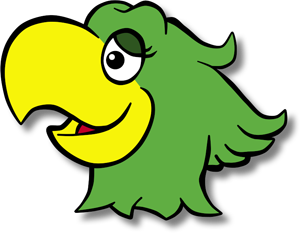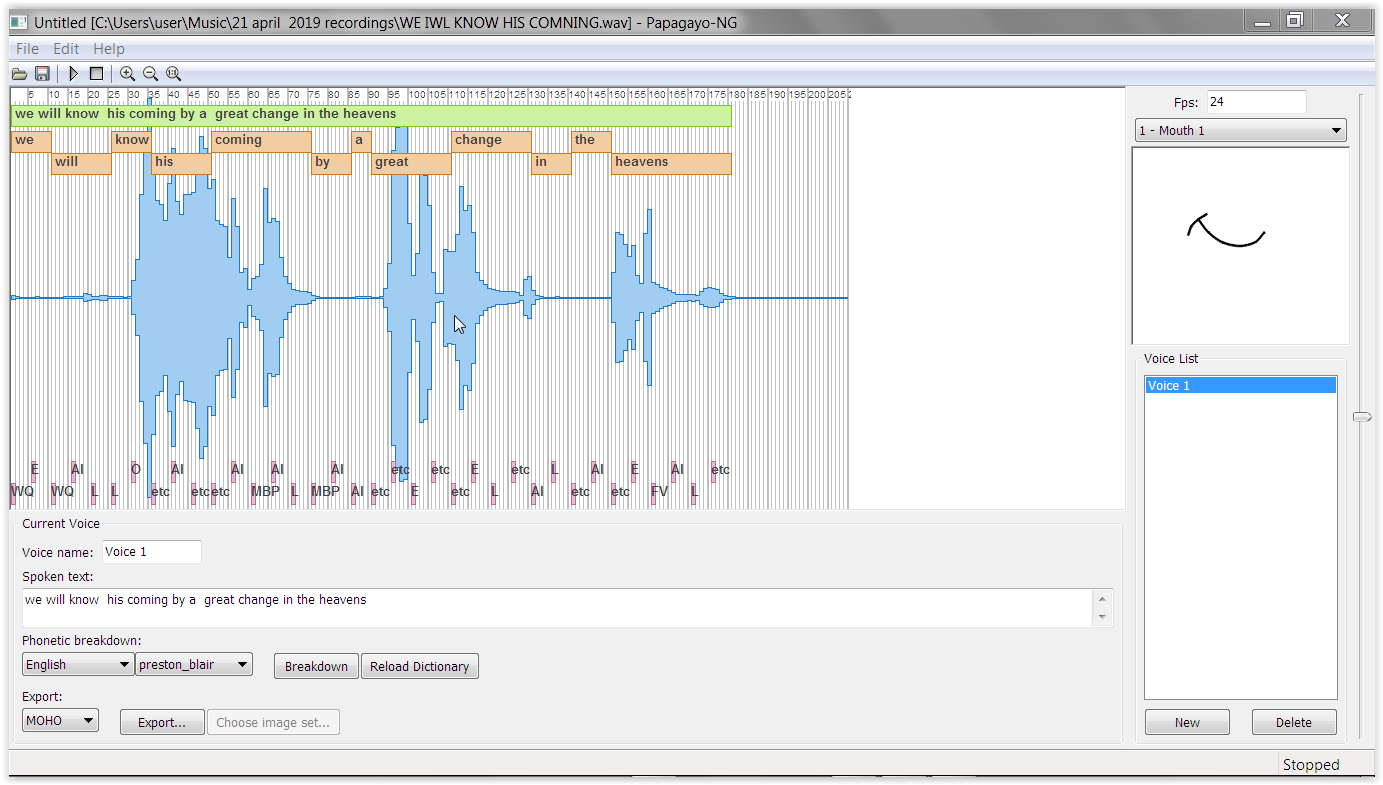How To Add New Mouth Shapes In Papagayo For Mac
- How To Add New Mouth Shapes In Papagayo For Mac Osx
- How To Add New Mouth Shapes In Papagayo For Macbook Pro
- How To Add New Mouth Shapes In Papagayo For Mac Os
I've often looked for good examples of 3D phoneme mouth shapes; but there isn't that much material available out there publicly - it's about time someone uploaded, so here goes :o) The first run of these standard 10 Preston Blair mouth shapes took about 3 hours to complete. I've revisited and updated the data several times since then - testing them on several different dialogue examples. All shapes shown here conform to the standard Preston Blair phoneme series.
Papagayo is a lip-syncing program designed to help you line up phonemes (mouth shapes) with the actual recorded sound of actors speaking. Papagayo makes it easy to lip sync animated characters by making the process very simple – just type in the words being spoken (or copy/paste them from the animation’s script), then drag the words on top. To add a new Art or Pattern Brush, open the CC libraries panel and just click on any of the supported brushes. (Animate currently supports only Illustrator brushes from CC Libraries.) For adding new brushes to your CC Library, you can use the Brush App for Android and iOS. Face with open mouth 128559: 1f62f: hushed face 128560: 1f630: face with open mouth and cold sweat 128561: 1f631: face screaming in fear 128562: 1f632: astonished face 128563: 1f633: flushed face 128564: 1f634: sleeping face 128565: 1f635: dizzy face 128566: 1f636: face without mouth 128567: 1f637: face with medical mask 128577: 1f641. Step 6: Drag the curve of the mouth upward. With the Face Tool selected, move your mouse cursor over the person's mouth. Various icons will appear on the screen, each representing a different property of the mouth (Upper Lip, Lower Lip, Mouth Width, and so on). Hover your cursor over an icon to display a tool tip showing the property's name. This update brings Forecast and Perspective widgets—quickly becoming a popular feature in OmniFocus for iOS—to the Mac for the first time. In macOS Big Sur, widgets appear in the updated Notification Center on the right side of the screen. Click Edit Widgets beneath any existing ones to add the new OmniFocus widgets. As with OmniFocus for.

Each image has been rendered at 300x300; for all you LipSynch users out there (part of the old Hash Inc. Animation:Master) or Magpie, feel free to convert these images to TGA or BMP as needed. I find they work well for the initial blocking out of most dialogue sequences. If you find them useful, great, glad I could help!! Check back here from time to time as I'll continue to revise the content; already posted are some extended phoneme shape examples.
How To Add New Mouth Shapes In Papagayo For Mac Osx
Creating phoneme pose shapes
Each pose is setup entirely with muscle level control point changes, no bones involved. The top set of teeth stay in a fixed location for all poses, this locks the upper jaw to the characters skull. If you don't, you'll end up with a set of false teeth, or worse, your character may end up looking like it's about to take out one of the supporting cast in an Alien style chomp out!
Depending on the feature set of your chosen software, a beneficial technique can be to create a low level set of poses relating to the underlying muscle movement of a face. I often build poses for Lip Stretcher, Lip Tightener, Sneering Muscle, Bottom Lip, Tongue, Smiling Muscle, Sad Muscle and Jaw. Various combinations of these poses can be mixed together to create the desired phoneme shape and give you greater control when you come to fine tune your dialogue performance.


|
|
|
|
|
|
|
|
|
|
Use asymmetry
Remember to add some asymmetry into your facial poses! The images here are devoid of emotion and personality so as to show each phoneme clearly. This is a bad thing for a real dialogue performance, so make sure you liven up your characters with asymmetrical expressions - just think of the gag with the little green aliens in Toy Story when the all go 'Ooooooooo...'
Related links
- Extended phoneme reference mouth shapes
- Hobbit phoneme character face examples
- Wizard phoneme quick animated example
- VST plugin wizard vocal musical interface element
- Principles for Lip Synch Animation by Keith Lango
- Lip Sync Making Characters Speak by Michael B. Comet
Back to Gary C. Martin's home page
Today on The Omni Show, we talk with Sal Soghoian. Sal joined Apple Inc. in January 1997 to serve as the Product Manager Automation Technologies Worldwide. For two decades, those technologies included AppleScript, Automator, Services, the Terminal, and Apple Configurator, among others. His journey then led him to join forces with the Omni Group to work on the ambitious Omni Automation framework implemented throughout the entire product suite.
How To Add New Mouth Shapes In Papagayo For Macbook Pro
In this episode, Sal shares equal parts inspiration and education: He gives details of his journey that led him from Apple to the Omni Group. He reasons through the power and potential of automation. He also shares about why the cross-platform automation that the Omni Group has recently implemented is SUCH a big deal.
To learn more about how Sal uses the Omni Group’s software to unlock the power of automation—tune in to The Omni Show.
How To Add New Mouth Shapes In Papagayo For Mac Os
Find tools as powerful as you when you download Omni Software for Mac and iOS—and if you have any questions or feedback, email support@omnigroup.com. Our amazing Support Humans are standing by, ready to help.